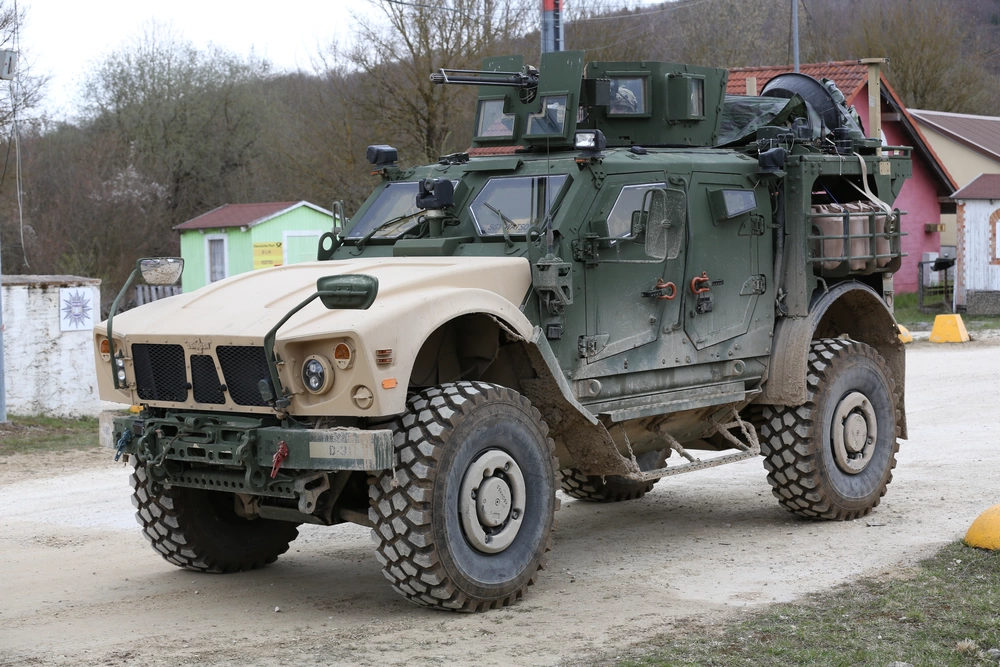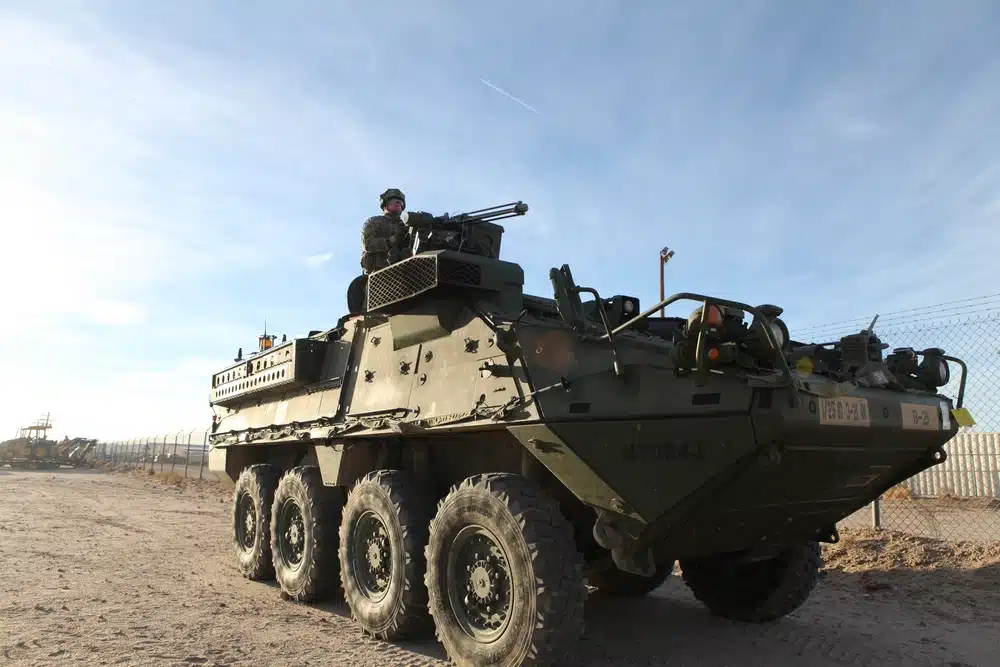At the recent AUSA convention in Washington, DC, Oshkosh Defense showcased the new Stryker Medium Caliber Weapon System (MCWS). The MCWS will be integrated into the upgraded Stryker Infantry-Carrier Vehicle Double V Hull (ICVAA1).
The MCWS features a 30mm cannon mounted on an unmanned turret.
The XM813 cannon, which was built by Northrop Grumman, will allow for programmable airburst ammunition through a dual-feed ammunition handling system, improved optics, and extended direct-fire range over the current 30mm temporary ONS solution. The MCWS Stryker will carry nine infantry troops and three crewmembers.
The Stryker ICVAA1 hull and XM813 cannon had been provided to contractors as government-furnished equipment to facilitate industry design efforts, foster competition, and cut down time.
More lethality, range, and accuracy
According to Oshkosh Defense, the MCWS Stryker “provides increased lethality, accuracy, and range while maintaining the mobility and survivability of the Stryker Infantry Carrier Vehicle Double V Hull (ICVVA1). Integrated on the chassis is a 30mm weapon system based on Rafael Advanced Defense Systems’ proven SAMSON family of turrets.”
In August 2022, Oshkosh submitted the first of the Strykers to the U.S. Army’s Aberdeen Test Center (ATC) where they will undergo Product Verification Testing (PVT). PVT testing will be completed in June 2023, with fielding to begin in July 2023.

The delivery to Aberdeen follows an additional $130 million contract award for upgrading 95 more Strykers with the MCWS, thus expanding the previous order to 269 MCWS-equipped Strykers valued at $356 million. Three Stryker Brigade Combat Teams will be equipped with the upgraded Strykers, with 20 vehicles slotted for PVT. The 1-2 Stryker Brigade Combat Team (SBCT) based at Joint Base Lewis McChord, Washington is slated to be the first unit to receive production vehicles, with deliveries starting in July 2023.
“Our team leveraged our engineering and manufacturing prowess and deep commitment to customer satisfaction to deliver our first MCWS test vehicle on time, despite the dynamic market forces we have all experienced over the last year,” said Pat Williams, Vice President and General Manager of U.S. Army and U.S. Marine Corps Programs, Oshkosh Defense.
“Since the initial contract award, the close collaboration with the U.S. Army has been paramount to achieving this important milestone,” Williams added.
“We’re incredibly proud to deliver this transformative solution and look forward to equipping our Soldiers with the precision, lethality capability they need,” he said.
Related: AbramsX tank launches kamikaze drones and goes electric
Why this Stryker upgrade may not be a good idea

Although anything that gives our infantry troops better, more powerful, and accurate weapons is always preferable, placing these 30mm cannons on a Stryker is probably not the best solution.
While the 30mm cannon would significantly increase the vehicle’s firepower against light-dismounted troops, it would still be outgunned by Russian BTRs or Chinese Type 90/92 carriers.
Further, even though U.S. doctrine states that Strykers are not to engage or maneuver against enemy combat fighting vehicles. And yet that is what frequently happened in the past. As Major James King wrote a few years ago in an excellent piece in the Modern War Institute, when commanders deployed to the National Training Center, one of the Army’s three combat training centers, they frequently misused Strykers by employing them in offensive operations where they fared badly.
Adding an upgunned 30mm cannon to the Stryker will make commanders more prone to using the Stryker MCWS in an offensive role. But the vehicle’s thin armor, which can’t withstand anything larger than a machine gun, makes it ill-suited for such a role.
Additionally, the placement of the turret makes the vehicle’s profile very high. This increases the risk of being seen from a long distance and gives a greater target for enemy troops with anti-tank weapons.
Therefore, up-gunning these vehicles is probably not the best way to support our troops on the ground.
Steve Balestrieri is a proven military analyst. He served as a US Army Special Forces NCO and warrant officer in the 7th Special Forces Group. In addition to writing for Sandboxx News, he has written for 19fortyfive.com and SOFREP.com and has covered the NFL for PatsFans.com for over 11 years. His work was regularly featured in the Millbury-Sutton Chronicle and Grafton News newspapers in Massachusetts.
Feature Image: U.S. Army Spec. Franklin assigned to 3rd Battalion, 21st Infantry Regiment, 1st Stryker Brigade Combat Team, 25th Infantry Division, Fort Wainwright, Alaska, pulls security on Forward Operating Base, Ruba, at National Training Center, Ft. Irwin, CA. (Photo by Cpl. Michael Spandau/U.S. Army)


